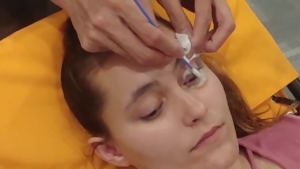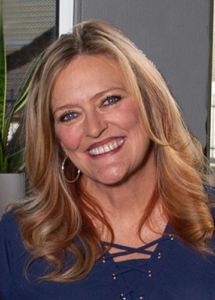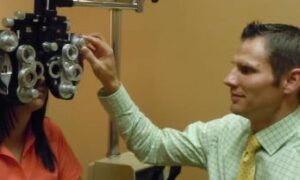
Blepharitis treatment in Dr. Sorrenson’s office. Dr. Sorrenson says that ensuring these patients leave feeling better is Practice Management 101.
Treating blepharitis to take care of patients AND your business.
By Laurie Sorrenson, OD, FAAO
Sept. 20, 2023
Treating blepharitis has been an exercise in frustration for me throughout my career! It’s been a perplexing journey, where a solution that proved effective for one patient often yielded no results for the next.
I recall the initial emergence of tea tree oil treatments, a development I believed would solve this problem. Undoubtedly, it definitely brought relief to some patients, while others struggled to tolerate the treatment, and some exhibited minimal response.
Over time, I’ve explored a multitude of approaches, including BlephEx, ZEST treatments, Low-Level Laser Therapy (LLLT), Intense Pulsed Light (IPL), Hypochlorous acid applications and Zocular products, among others.
I said before that dealing with red eyes is Practice Management 101, and so is treating blepharitis. Many of these patients have been trying to fix their crusty, red, itchy lids for years.
Coming up with the best, most efficient way of treating blepharitis might seem better discussed in a clinical paper versus a business magazine! But we are all optometrists trying to take good care of our patients in the most efficient, effective manner. Being efficient and effective is business!!
Key Steps of Treatment in Our Office
Here is our current protocol for the recalcitrant blepharitis patient:
First, we clean the lids in two steps. We put the Zocular Zest on the lid margins and let it soften the scurf and debris for 3-5 minutes or more.
Then we manually clean the lid margins, usually with a Blephex, but sometimes with a cotton-tipped applicator if the patient cannot tolerate the Blephex.
Other Articles to Explore
Last, we do an IPL treatment followed by blue light LLLT. Patients are advised on at-home follow-up care, which might entail using Zocugel at bedtime and subsequently cleansing with hypochlorous acid or Peeq Pro cleanser. There are many options for at-home follow-up care including NuLids, Waiva w/Peeq Pro, Cliradex and Optase wipes with tea tree oil, etc.
Finally Able to Substantially Help Blepharitis Patients
For the first time in all my years (too many to count) of treating blepharitis patients, I feel like we can consistently and significantly alleviate our patients’ signs and symptoms of blepharitis.
Being able to take care of these itchy, uncomfortable, and sometimes unsightly, patients is such a practice builder. Just today, my husband returned from a family trip and told me his cousin said her ophthalmologist couldn’t help her with her blepharitis!
Recently, I used this protocol on one of my optometric colleagues, and it made a huge difference to his comfort.
As everyone knows, there is a new treatment called Xdemvy from Tarsus. I am sure this will become part of our future protocol.
Taking care of these patients is Practice Management 101!!
 Laurie Sorrenson, OD, FAAO, is president of Lakeline Vision Source in Cedar Park, Texas, and the Professional Editor of Review of Optometric Business (ROB). To contact her: lsorrenson@gmail.com.
Laurie Sorrenson, OD, FAAO, is president of Lakeline Vision Source in Cedar Park, Texas, and the Professional Editor of Review of Optometric Business (ROB). To contact her: lsorrenson@gmail.com.



























